#shane auckland
Explore tagged Tumblr posts
Text
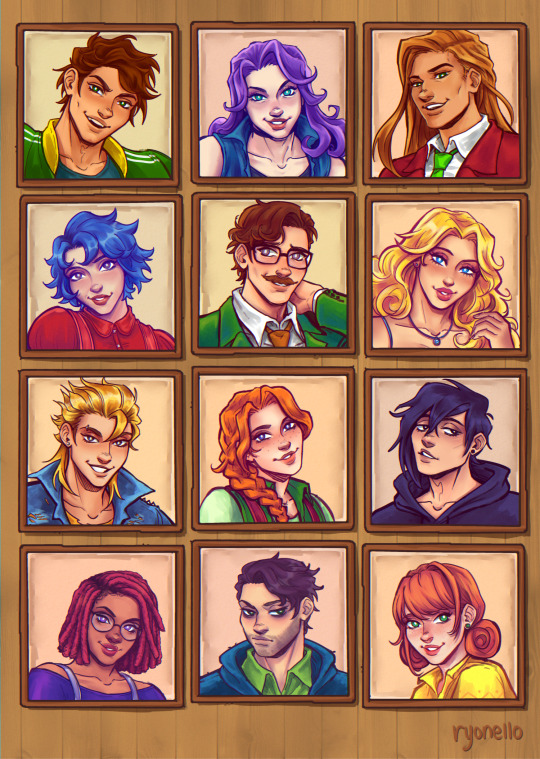
im playing my favorite dating sim again 💌
#stardew valley#sdv#alex#abigail#elliott#emily#harvey#haley#leah#sebastian#maru#shane#penny#my art#new print for april tour !!!!#and my online store soon hopefully :D#it was designed to be a3 but the thought of shipping a3s is scary i have to figure that out lmAO#so i will print it in a4 as well for online and for ppl who dont have a3 space <3#BUT YA hope to see u at melbnova/goldnova/auckland overload/dreamhack etc etc#hopefully this month doesnt beat my ass LMAO
3K notes
·
View notes
Text

Shane Cotton mural, downtown Auckland
I watched this mural being executed (it’s right by my downtown bus terminus) and never tire of looking at it. The artist works across Māori and European artistic traditions, and he said that his starting points was a crossover in domestic decoration - the adoption by Māori of the settler habit of cultivating houseplants. He ties it to the Māori identification with place - in many respects, but especially with the soil, and with particular geographical features such as rivers and mountains. A person might allude to their maunga (mountain) for example, when listing their whakapapa or ancestry. In the mural the pots are depicted as full of soil, which at the rim forms the shapes of particular mountains or their names. I love the perspective jolt from domestic-scale pot to gigantic volcano; and the scale shifts play wonderfully with the way the mural works as public art, viewed from various distances. You can take it in whole, or spot fresh detail as you pass in a double-decker bus, or cross the street.
26 notes
·
View notes
Text
Hello cat loving friends!!
Just wanting to reach out to everyone who sees this and loves cats and wants to help a wonderful small business in New Zealand out. Whether you can donate or even if you can’t, a share would mean the world!
Purrs & Beans is a social enterprise - meaning all profits go back into the cafe to look after the cats and keep it running. Run by two wonderful humans, Shane and Faith-Ashleigh.
Purrs & Beans have been running for almost a decade in Auckland. They first started out in the Auckland cbd as Barista Cats. Then made the move across the bay to Birkenhead where they found a wonderful new space and rebranded as Purrs & Beans.
Sadly due to a drop in patronage they’ve hit a little bit of a rough patch, and need a bit of a leg up. The reality of having a cat cafe is there’s bills. Vet bills and other bills. Purrs & Beans cats are all a little older bar a couple of newly adopted by the cafe cats. And some have additional needs or were deemed harder to adopt.
I have been lucky enough to visit the cafe when I have visited Auckland and the cats are so well cared for and loved. Have many spaces to relax in, including an enclosed balcony area so they can go outside. Plus they can retreat to a space where visitors can’t access if they want to be left alone.
Purrs & Beans is truly a wonderful place run by wonderful people who I’ve also met when I have visited. They really want to keep the business running especially given they’re so close to hitting 10yrs. And they want to keep spreading the message of adopting cats from shelters - they also foster cats and kittens from some rescues around Auckland to help the cats get socialised and meet people!
So again, if you are able to donate please do click the link above and you can even leave a message on your donation. - or make it anonymously. Please do note that the donation will be charged in NZD (New Zealand dollars) and when you pledge you won’t be charged right away. Your card only gets charged if the campaign reaches its goal on the 30th of April at 11pm NZST (I believe the pledge me site charges within a couple of days of the goal being met if it’s met so you might not be charged until a couple of days into May)
This campaign is an all or nothing campaign and they only will get the money if the goal is met. So please. If you’re in a place to donate I know Shane and Faith-Ashleigh, along with their gorgeous cafe kitties, would greatly appreciate it. If you can’t, then please please share this far and wide so others may be able to help!
#New Zealand#aotearoa#cats#cat#kittens#kitten#rescue cats#gato#meow#purr#purrs#Taylor Swift#Taylor loves cats#feel good#rescue kittens#social enterprise#pledge me#fundraiser#fundraising#help#please#foster cats#cats of tumblr#toe beans#donations#cats of the internet#signal boost#cat cafe#Auckland#small business
20 notes
·
View notes
Text
OPINION: The national hui at Tūrangawaewae Marae saw 10,000 people united in the face of actions by the coalition government, including its proposed Treaty Principles Bill. John Campbell was there.
History happens on single days.
Yesterday, at Tūrangawaewae, will be one of them.
“Why are you here?”, I asked Tame Iti.
“Vibrations”, he replied.
The rest of us will feel them over the days and months and years ahead.
Initial estimates of how many people would come had begun at 3000. Then 4000 registered, so estimates grew to 5000. Then 7000. By lunchtime, organisers were saying 10,000 had arrived. There wasn't room inside for them all. A large marquee across the road was full, all day. Every seat, everywhere, was taken. There was hardly standing room.
This special place, which has held tangi for royalty, which is where the Tainui treaty settlement was signed, which was visited by Nelson Mandela, and Queen Elizabeth II, and many of our greatest rangatira, has seldom seen so many people.
But no one objected. To standing. To the steaming heat. To the fact that sometimes people were too far away from the speakers, or the screens relaying them, to hear.
New Zealand First’s deputy leader, Shane Jones, told RNZ the hui could turn into a “monumental moan session”.
But it didn’t. Somehow, the word I keep coming back to is joyful.
The National Hui for Unity it was called. And it felt like exactly that.
On the way to Ngāruawāhia early yesterday morning, I pulled into a truck-stop near Bombay, at the southernmost end of the Auckland motorway system, to meet the Ngāpuhi convoy travelling down from the far north.
Some had begun their journey way up, in Kaikohe, at 3am. They spilled out into the half light of an overcast morning and inhaled the beginning of what would be an extraordinary day.
It’s easy for the significance of this delegation to be lost amid all the other arrivals. The people who’d come from even further away. Iwi after iwi. Ngāpuhi, Ngāti Porou, Tainui, Ngāti Kahungunu, Ngāi Tahu, Te Arawa, Ngāti Tūwharetoa, Ngāi Tūhoe, Ngāti Maniapoto – the big ten, all there, in declaratory numbers.
Just a few members of the Ngati Porou contingent who drove over on Friday from Tairāwhiti to attend the hui.
Ngāi Tahu representatives had taken a huge journey by road, then Cook Strait ferry, then road.
A friend’s father flew up from Invercargill.
But the size and standing of Ngāpuhi’s delegation provides some insight into how very significant this hui was.
Ngāpuhi aren’t a Kīngitanga iwi. They don’t see Kīngi Tūheitia as their king. And they contain Waitangi within their broad, northern boundaries – home, of course, to the Waitangi commemorations, our most famous form of national hui.
And yet they came, hundreds of Ngāpuhi. Some wearing korowai made especially for the occasion. Some the direct descendants of Treaty signatories. A waiata, composed for the hui, rehearsed beyond newness into a heartfelt and singular voice.
“Why are you going?” I asked Mane Tahere, the chair of Te Runanga-Ā-Iwi-Ō-Ngāpuhi. “It feels significant that Ngāpuhi are attending in such numbers.”
“Because”, he answered, “the challenges we face do not discriminate amongst iwi. We held three hui to discuss whether we should come, and who would come, and what our message would be. The final hui was only last Saturday. I wouldn’t have put our rūnanga resources into something we didn’t collectively support. This was hapū rangatiratanga. Hapū after hapū spoke and said we should go.”
Why?
“Because the question we have to ask as Māori is how we activate ourselves, re-activate ourselves, for 2024? How do we say to the coalition government, ‘hang on, what do you mean, and what are you doing?’ And the best way to do that is to do it together. Now is the time for Māori unity.”
The National Hui for Unity was only called by Kīngi Tuheitia Pootatau Te Wherowhero VII (Kīngi Tuheitia) at the beginning of December. That so very many people would arrive here, only six weeks later, in the holiday-season slowness of the third week of January, speaks not only to how resoundingly those present reject the coalition government’s Treaty Principles Bill, but also to a strength of unity already existing.
That is to say, a unified rejection of what Kīngitanga Chief of Staff, Archdeacon Ngira Simmonds, described as the “unhelpful and divisive rhetoric” of the election campaign.
“Maaori can lead for all”, said Ngira Simmonds, at the beginning of this month, “and we are prepared to do that.” *
This is part of a growing sense, as Ngāpuhi’s Mane Tahere told me, that “we’ve turned a corner”.
The corner is that u word – unity. The increasingly urgent sense of the need for a collective response to the coalition government.
And, without great external fanfare, these relationships have already been building.
The Kīngitanga movement has begun sending some of its most senior figures north for Waitangi Day commemorations – into the heart of Ngāpuhi country. And again, like Ngāpuhi coming to Ngāruawāhia, this reflects a belief that by Māori for Māori, all Māori, is the strongest possible response to a government they fear is intent on division.
This year, for the first time since 2009, Kīngi Tūheitia himself (who has Ngāpuhi whakapapa on his father’s side) will be attending Waitangi.
Symbolic? Yes.
Significant? Yes.
Unity.
Mana motuhake (self-government).
“Look at all these people,” Tame Iti said to me. “They’re here to listen. To learn. The first layer of mana motuhake is yourself.”
All protest is a form of risk.
Risk that it goes awry – and costs support, rather than galvanises it.
Risk that it arms your most cynical critics with the material for derision or contempt.
Risk that no one notices. Or that the turnout is so small that those who have the luxury of being able to not protest can turn away.
Some politicians may tell you that 10,000 people is not very many. I would say otherwise. In 30 years of covering politics, I have never attended a New Zealand party-political rally that attracted anywhere near that many. Or even half that number.
What happened at Tūrangawaewae yesterday was a triumph for all those involved.
In the striking heart of the mid-afternoon, I passed Tukoroirangi Morgan, the chair of the Waikato-Tainui executive board. We were going in opposite directions over the sunburnt road.
Chair of the Waikato-Tainui executive board Tukoroirangi Morgan.
Chair of the Waikato-Tainui executive board Tukoroirangi Morgan. (Source: 1News)
“How’s it going, Tuku?”, I asked him.
“It’s amazing”, he replied. “All these people.” And then he stopped, looked out over the everyone, everywhere, and repeated himself. “Amazing.”
Tūrangawaewae is located just outside Ngāruawāhia, directly across the Waikato River from the shops in that little township. Somewhere, just to its east, the new Waikato Expressway has stolen many of the estimated 17,000 cars a day that once passed through here. For decades, Ngāruawāhia was a pie and petrol stop on the main road between Hamilton and Auckland.
Not so much, any longer.
The challenge of history is to survive it.
And Kīngitanga itself was a kind of survival strategy.
It wasn’t this simple, of course, but a famous saying of the second Māori King, Tāwhiao, broadly speaks to the hopes of the Kīngitanga movement: “Ki te kotahi te kākaho ka whati ki te kāpuia e kore e whati.” The Māori Dictionary translates it prosaically: “If there is but one reed it will break, but if it is bunched together it will not.”
Yesterday, the reeds felt tight and strong.
“Why are you here?” I asked people, over and over.
The answer was almost always a variation of what Christina Te Namu told me. Christina, too, is Ngāpuhi. “I just wanted to support our people”, she said. “Now is the time for us to stand together as one.”
A group of women from Ngati Porou stopped to say kia ora.
It seems almost inadequate to state it like this, but they were there to be there. They had driven from Tairawhiti because being there mattered. Every person I spoke to had come to be part of this declaration of solidarity.
'An attempt to abolish the Treaty'
On Friday morning, something happened that gave this already significant day a vivid, extra weight.
My 1News colleague, Te Aniwa Hurihanganui, obtained details of the coalition Government’s Treaty Principles Bill. In its initial form it is not so much a re-evaluation of the role of the Treaty as an abandonment of it. Professor Margaret Mutu, speaking on 1News on Friday night, called it “an attempt to abolish the Treaty of Waitangi.”
This has arisen out of National’s coalition agreement with ACT.
I wrote about this at the end of last year, and also in the weeks after the election. I looked at the coalition agreements between National and ACT, and National and New Zealand First. And I noted their pointed focus on Māori. Some of it felt mean. What I called a strange, circling sense of a new colonialism.
I wrote about what I saw as ACT and New Zealand First's experiments with a kind of "resentment populism".
Who are we?, I asked. And where are we heading?
We’re heading to National reaching 41 percent in the first political poll of the year, “a massive jump”, as Thomas Coughlan described it in the NZ Herald, earlier this week. And we’re heading here, to Tūrangawaewae, and to thousands of people who travelled from throughout the country to collectively say, “no”.
In other words, we’re heading towards, or have already arrived in the vicinity of what PBS called the “divide and conquer populist agenda”.
And we’re heading to politics that purport to speak out against division, whilst arguably fomenting it.
In an opinion piece by David Seymour, published in the NZ Herald on Friday, the ACT leader begins with the sentence, “If there’s one undercurrent beneath so much of our politics, it’s division”.
Is David Seymour responding to division, or causing it?
The Treaty, he said, in December, “divides rather than unites people, as most treaties are supposed to do.”
But whose endgame is division? Really?
I've written before about the kind of populist politics that drive people to division, then throw up their hands and yell, “LOOK! DIVISION”, having wished for exactly that.
This, as Australian Academic Carol Johson wrote in The Conversation after the “no” vote in Australia’s Voice referendum, speaks to “a conception of equality controversially based on treating everyone the same, regardless of the different circumstances or particular disadvantages they face.”
That's equality as David Seymour consistently claims to define it.
But do as they say, not as they do. There was a time when ACT received some handy support from National. Remember that famous cup of tea? Surely Seymour's idea of equality would have insisted that Act get trounced than receive a leg-up?
The fascinating thing is that populism is typically structured around “the claim to speak for the underdog and the critique of privileged 'elites' and their disregard for the needs of ’ordinary people’".
But it’s hard for National to occupy that space when the party has historically been supported by the “elite”, and when your leader is a former CEO who owns seven properties, and who received total remuneration of $4.2 million in his last full year at Air New Zealand.
So, you can do two things. You can outsource populism to your coalition partners. (And sit there with a face of injured innocence, like someone insisting it was really the dog who farted.) And you can allow coalition partners to redefine the definition of “elite”.
No-one does this more enthusiastically than Winston Peters.
During the months prior to the election, the New Zealand First leader said “elite” more often than Kylie Minogue has said “lucky”.
“Elite Māori”, “elite power-hungry Māori”, “an elite cabal of social and ideological engineers.”
The idea, as I wrote after the election, is to somehow persuade us that Māori are getting something the rest of us are not. And they are: a seven-years-shorter life expectancy, lower household income, persistent inequities in health, the greatest likelihood of leaving school with low or no qualifications, and an over-representation in the criminal justice system to such a great extent that Māori make up 52 percent of the prison population.
Elite as.
So, had this hui erupted into a kind of rage, would that have been a victory for populism? Would the divisions have become entrenched? Would Māori have been blamed for reacting to provocation, rather than the provocation itself being examined?
None of this is new. Which is why Māori recognise it.
In July 1863, the Crown issued a proclamation demanding: “All persons of the native race living in the Manukau district and the Waikato frontier are hereby required immediately to take the oath of allegiance to Her Majesty the Queen”.
And those who wouldn’t?
“Natives refusing to do so are hereby warned forthwith to leave the district aforesaid, and retire to Waikato beyond Mangatawhiri.”
And anyone “not complying with this Order… will be ejected.”
Vincent O’Malley, in his remarkable book The Great War for New Zealand describes what happened next.
“On the same date some 1500 troops marched from Auckland for Drury.”
The troops didn’t stop. There are few more egregious and cynical predations in our history. South they went. Without just cause or provocation. Into Waikato.
Ngāruawāhia, Vincent O’Malley tells us, was “strategically important during the war because of its location at the confluence of the Waikato and Waipā rivers.”
“By 6 December 1863, Ngāruawāhia (‘the late head quarters of Māori sovereignty’ as one reporter dubbed it) had been deserted.”
At four o’clock that afternoon, a British flag was hoisted there.
And why does this story matter, still? 160 years later.
Because the Crown used the requirement for “allegiance”, the demand that Māori be loyal to it, so disingenuously. The language of colonisation purported to be about governance, about the role and rule of a single law, but it was a violation of law and a betrayal of the principles of government.
By the end of this rule of law, roughly 1.2 million acres of Waikato land had been “confiscated”.
And any opposition to it was defined, in law, as “rebellion”. And rebellion was justification for seizing more land.
This is our history. And part of it happened here, where the 10,000 people met yesterday.
It was so hot by late morning that people were swimming in the Waikato River.
I wandered down from the crowds at the hui to talk to the people swimming. They were mostly young, although not all.
I met a ten year old who told me her parents had brought her so she could “find out where I’m from”.
She was from Waitara, in Taranaki, so this wasn’t a literal homecoming.
I wondered how many people had travelled big distances to have a new or reinvigorated sense of what it means to be Māori.
Heading back inside, I saw Professor Margaret Mutu.
There are few who have more rigorously applied their formidable intellect to making sense of the intersection of Māori and colonisation.
Professor Margaret Motu: "You have two parties to a treaty, and one of them can’t unilaterally redefine it."
She is of Ngāti Kahu, Te Rarawa, Ngāti Whātua and Scottish descent. She is Professor of Māori Studies at the University of Auckland. And, her university profile tells us, she holds a BSc in mathematics, an MPhil in Māori Studies, a PhD in Māori Studies specialising in linguistics and a DipTchg.
There was nowhere quiet for us to sit. But people kindly made space at the back of a kitchen prep area. And I asked her about the significance of the Treaty, for Māori, for the Crown, and for us all.
“Te Tiriti is where you go," she said. “When things look as if they’re not working for you, you have a protection, and that’s where you go. It will always look after you. It will always protect you.”
“And while it seems clear that this government wants to abolish the Treaty," Margaret Mutu continued, “that can never happen. For one thing, you have two parties to a treaty, and one of them can’t unilaterally redefine it. But also, our tūpuna were very, very wise. In the Treaty they invited Pākehā, the British, to come and live with us. But they had to live with us in peace. In peace and friendship. And that’s what the Treaty is. It’s a treaty of peace and friendship. You can’t redefine that. You can’t rewrite that. It was very wise and it was very clear.”
And here’s where Margaret Mutu helped me understand why the mood at Tūrangawaewae was so – and I wish I could find better words – hopeful, positive, constructive.
Manaaki manuhiri: to support and care for your guests.
“We invited Pākehā to live amongst us,”, she said. “And what a lot of our Pākehā friends don’t understand, I think, is that our tikanga requires us to manaaki manuhiri. And that’s about looking after everybody. Everybody. So even when we have hate thrown at us, we have to assert aroha. That’s what manaaki manuhiri requires, even when people are very badly behaved.” Margaret Mutu laughs at this. “So, people have come here today to find that strength. It’s not about fighting people. It’s to find that strength and unity to be able to rise above the hatred. And now we will just get on and do exactly that.”
After lunch, I was invited to meet the King.
I’ve never been inside Tūrongo before, the royal residence. Or Māhinaarangi, which is both a famous meeting house and a unique kind of museum.
It looks out over the marae. And it gently contains, as if nestled in the palm of a large, open hand, photos and remembrances of those who’ve come before. The people who built Kīngitanga. Tāwhiao is there, his photo looking down from the wall. He died 130 years ago. How he would have marvelled, with great pride, at such a gathering, and perhaps, also, despaired at it still being necessary, in 2024.
Ngira Simmonds took me in. And I found myself, shy for once, able to stand and look out, viewing the unfolding of this new history from a place that is so central to the story of the history of us.
Kīngi Tuheitia was beaming.
“I didn’t sleep last night”, he told me. “But I knew this was the time for us to come together. And we have. We have.”
It occurred to me, as I walked back to stand amongst the thousands Kīngi Tuheitia was looking out to, with such delight, that the hui was the actualisation of Tāwhiao’s hope for the unbreakable strength of reeds tied together.
What was was happening felt transformative in the very fact it was happening. The mana motuhake of 10,000 people.
The vibrations.
Will the government feel them?
Will they survive the divisions of populism? Of politics that echo our repeated capacity to claim we are governing to unite people whilst governing against Māori?
Or maybe, this is how it all begins. In an historically large display of unity.
Rātana follows. Then Waitangi.
Yesterday ended with Kiingi Tuheitia speaking.
“The best protest we can do right now is be Maaori. Be who we are, live our values, speak our reo, care for our mokopuna, our awa, our maunga, just be Maaori. Maaori all day, every day. We are here, we are strong.”
The reeds tightening.
*Macrons haven't been used when quoting Tainui, who choose not to use them.
fantastic article on the national hui in response to aotearoa’s assault on indigenous rights. click through for pictures and video.
#new zealand#aotearoa#nz#nzpol#news#politics#indigenous rights#maaori#maori#land back#david seymour#waitangi#long post
50 notes
·
View notes
Text
Mai Tai experience 2024
Adventures of 60 somethings on board a catamaran.
On the 31st of January 2024, we became the proud owners of a Lagoon 400 2010 model, located in Opua New Zealand.
On the 27th of February, after a few family engagements, we flew to Auckland and drove 3 hours to Opua Marina, gathering some simple supplies on the way. I felt so cold and exhausted when we arrived that I nearly cried at the thought of living on this small, damp and smelly boat for the next 5 years. What had we done, we had a perfectly good life in a house. Why why why?

The next day was better.
28th February 2024, we sorted out a few things and organized a few others. Where to put clothes, towels, and did we have enough. Sheets were on board, but I threw most out as they were thin and barley reuseable. I started a list of things to but for us and the boat to be comfortable and livable for the next…..years?
So first trip in our hire car to Whangarei, (Pronounced Foneray) we found Spotlight, Countdown, Kmart and Bunnings. We loaded up and drove the 1 hour back to Opua.
1st March 2024: Next day we though we would take her for a spin and charge batteries and empty the black water tank, (the wee and poo tank). So we got out to open water and came into the bay of Russell. Lovely little spot but the anchor wouldn’t go down, so I suggested David just drive around and Ill cook breakfast/brunch.
So we did that and headed back to the marina. On our approach, on an outgoing tide, she was hard to handle. The birth spot was big enough for a catamaran but not big enough for us to park in with our limited experience and a tide that wanted to push us where we did not want to go. So I am running around the deck shouting directions to David. More like, “STOP, YOUR GOING TO HIT THE WHARF”. More things like, “Oh what the FUCK, we are going to crash”. Came out of my mouth on several occasions. We had the neighbours, folk from boats near us, on the dock along with the harbor master Shane. He was speaking calmly to David about pulling back and not so heavy on the power, but I don’t think he could hear him over my screaming, “We are going to crash.”

Yes we hit the dock and crushed our port side sugar scoop with an indent of about 25cm long and 10cm deep. Not too much damage to the boat but our self esteem was shattered, and I was a nervous wreck. One of our neighbours from a boat named Scallywag, was on the dock to console us. He had just had a similar experience and the tide pushed him into the bow spirt of another boat punching a hole in the side of his 50 ft catamaran…..Ouch.
2nd March 2024: Olly the previous owner came by and he sorted out the windlass, (anchor) not working problem. He said he cleaned up some loose wiring and maybe some got lost in the process and he unplugged the windlass. Not sure but he got it going and answered a lot of David's questions. We told him about our encounter with the dock and he said, “You know what they say, “You haven’t been around if you haven’t run aground”. I’m not sure if that made me feel better but, there you have it.
3rd March 2024: We gathered up our torn confidence and broken dreams decided we had to get back on the horse….so to speak. So out we went for another attempt at having fun on our new boat. This time we dropped the anchor in Russell, and I just put the kettle on when the afternoon storm that was expected at 1pm came early and interrupted our 10am brunch. So up came the anchor and we headed back to the marina. Before we even arrived my stress levels were off the chart. But we listened to Shane and came in on a slack tide and we managed to berth Mai Tai without incident. This was cause for celebration, so we had a shower and went into Paihia for dinner and a bottle of wine.
8th March 2024: Flew back to Sydney for my 60th birthday cruise on board Celebrity Edge to …..of all places, New Zealand. During this cruise we saw parts of the South Island and the sounds that were absolutely breath taking. The enormity of these places that we could now explore in our own boat! So we decided to skip the Rally to Fiji this year and explore New Zealand for 12 months. Plus we are not experienced enough in operating our boat yet. We need time and some nautical miles before we conquer open water.

3 notes
·
View notes
Text
opinion article by John Campbell about the National Hui for Unity.
(full text below the "read more" button in case of paywall)
OPINION: The national hui at Tūrangawaewae Marae saw 10,000 people united in the face of actions by the coalition government, including its proposed Treaty Principles Bill. John Campbell was there.
History happens on single days.
Yesterday, at Tūrangawaewae, will be one of them.
“Why are you here?”, I asked Tame Iti.
“Vibrations”, he replied.
The rest of us will feel them over the days and months and years ahead.
Initial estimates of how many people would come had begun at 3000. Then 4000 registered, so estimates grew to 5000. Then 7000. By lunchtime, organisers were saying 10,000 had arrived. There wasn't room inside for them all. A large marquee across the road was full, all day. Every seat, everywhere, was taken. There was hardly standing room.
This special place, which has held tangi for royalty, which is where the Tainui treaty settlement was signed, which was visited by Nelson Mandela, and Queen Elizabeth II, and many of our greatest rangatira, has seldom seen so many people.
But no one objected. To standing. To the steaming heat. To the fact that sometimes people were too far away from the speakers, or the screens relaying them, to hear.
New Zealand First’s deputy leader, Shane Jones, told RNZ the hui could turn into a “monumental moan session”.
But it didn’t. Somehow, the word I keep coming back to is joyful.
The National Hui for Unity it was called. And it felt like exactly that.
Iwi after iwi: the big 10
On the way to Ngāruawāhia early yesterday morning, I pulled into a truck-stop near Bombay, at the southernmost end of the Auckland motorway system, to meet the Ngāpuhi convoy travelling down from the far north.
Some had begun their journey way up, in Kaikohe, at 3am. They spilled out into the half light of an overcast morning and inhaled the beginning of what would be an extraordinary day.
It’s easy for the significance of this delegation to be lost amid all the other arrivals. The people who’d come from even further away. Iwi after iwi. Ngāpuhi, Ngāti Porou, Tainui, Ngāti Kahungunu, Ngāi Tahu, Te Arawa, Ngāti Tūwharetoa, Ngāi Tūhoe, Ngāti Maniapoto – the big ten, all there, in declaratory numbers.
Ngāi Tahu representatives had taken a huge journey by road, then Cook Strait ferry, then road.
A friend’s father flew up from Invercargill.
But the size and standing of Ngāpuhi’s delegation provides some insight into how very significant this hui was.
Ngāpuhi aren’t a Kīngitanga iwi. They don’t see Kīngi Tūheitia as their king. And they contain Waitangi within their broad, northern boundaries – home, of course, to the Waitangi commemorations, our most famous form of national hui.
And yet they came, hundreds of Ngāpuhi. Some wearing korowai made especially for the occasion. Some the direct descendants of Treaty signatories. A waiata, composed for the hui, rehearsed beyond newness into a heartfelt and singular voice.
“Why are you going?” I asked Mane Tahere, the chair of Te Runanga-Ā-Iwi-Ō-Ngāpuhi. “It feels significant that Ngāpuhi are attending in such numbers.”
“Because”, he answered, “the challenges we face do not discriminate amongst iwi. We held three hui to discuss whether we should come, and who would come, and what our message would be. The final hui was only last Saturday. I wouldn’t have put our rūnanga resources into something we didn’t collectively support. This was hapū rangatiratanga. Hapū after hapū spoke and said we should go.”
Why?
“Because the question we have to ask as Māori is how we activate ourselves, re-activate ourselves, for 2024? How do we say to the coalition government, ‘hang on, what do you mean, and what are you doing?’ And the best way to do that is to do it together. Now is the time for Māori unity.”
A powerful rejection
The National Hui for Unity was only called by Kīngi Tuheitia Pootatau Te Wherowhero VII (Kīngi Tuheitia) at the beginning of December. That so very many people would arrive here, only six weeks later, in the holiday-season slowness of the third week of January, speaks not only to how resoundingly those present reject the coalition government’s Treaty Principles Bill, but also to a strength of unity already existing.
That is to say, a unified rejection of what Kīngitanga Chief of Staff, Archdeacon Ngira Simmonds, described as the “unhelpful and divisive rhetoric” of the election campaign.
“Maaori can lead for all”, said Ngira Simmonds, at the beginning of this month, “and we are prepared to do that.” *
This is part of a growing sense, as Ngāpuhi’s Mane Tahere told me, that “we’ve turned a corner”.
The corner is that u word – unity. The increasingly urgent sense of the need for a collective response to the coalition government.
And, without great external fanfare, these relationships have already been building.
The Kīngitanga movement has begun sending some of its most senior figures north for Waitangi Day commemorations – into the heart of Ngāpuhi country. And again, like Ngāpuhi coming to Ngāruawāhia, this reflects a belief that by Māori for Māori, all Māori, is the strongest possible response to a government they fear is intent on division.
This year, for the first time since 2009, Kīngi Tūheitia himself (who has Ngāpuhi whakapapa on his father’s side) will be attending Waitangi.
Symbolic? Yes.
Significant? Yes.
Unity.
Mana motuhake (self-government).
“Look at all these people,” Tame Iti said to me. “They’re here to listen. To learn. The first layer of mana motuhake is yourself.”
All protest is a form of risk.
Risk that it goes awry – and costs support, rather than galvanises it.
Risk that it arms your most cynical critics with the material for derision or contempt.
Risk that no one notices. Or that the turnout is so small that those who have the luxury of being able to not protest can turn away.
Some politicians may tell you that 10,000 people is not very many. I would say otherwise. In 30 years of covering politics, I have never attended a New Zealand party-political rally that attracted anywhere near that many. Or even half that number.
What happened at Tūrangawaewae yesterday was a triumph for all those involved.
In the striking heart of the mid-afternoon, I passed Tukoroirangi Morgan, the chair of the Waikato-Tainui executive board. We were going in opposite directions over the sunburnt road.
“How’s it going, Tuku?”, I asked him.
“I’s amazing”, he replied. “All these people.” And then he stopped, looked out over the everyone, everywhere, and repeated himself. “Amazing.”
The challenge of history
Tūrangawaewae is located just outside Ngāruawāhia, directly across the Waikato River from the shops in that little township. Somewhere, just to its east, the new Waikato Expressway has stolen many of the estimated 17,000 cars a day that once passed through here. For decades, Ngāruawāhia was a pie and petrol stop on the main road between Hamilton and Auckland.
Not so much, any longer.
The challenge of history is to survive it.
And Kīngitanga itself was a kind of survival strategy.
It wasn’t this simple, of course, but a famous saying of the second Māori King, Tāwhiao, broadly speaks to the hopes of the Kīngitanga movement: “Ki te kotahi te kākaho ka whati ki te kāpuia e kore e whati.” The Māori Dictionary translates it prosaically: “If there is but one reed it will break, but if it is bunched together it will not.”
Yesterday, the reeds felt tight and strong.
“Why are you here?” I asked people, over and over.
The answer was almost always a variation of what Christina Te Namu told me. Christina, too, is Ngāpuhi. “I just wanted to support our people”, she said. “Now is the time for us to stand together as one.”
A group of women from Ngati Porou stopped to say kia ora.
It seems almost inadequate to state it like this, but they were there to be there. They had driven from Tairawhiti because being there mattered. Every person I spoke to had come to be part of this declaration of solidarity.
'An attempt to abolish the Treaty'
On Friday morning, something happened that gave this already significant day a vivid, extra weight.
My 1News colleague, Te Aniwa Hurihanganui, obtained details of the coalition Government’s Treaty Principles Bill. In its initial form it is not so much a re-evaluation of the role of the Treaty as an abandonment of it. Professor Margaret Mutu, speaking on 1News on Friday night, called it “an attempt to abolish the Treaty of Waitangi.”
This has arisen out of National’s coalition agreement with ACT.
I wrote about this at the end of last year, and also in the weeks after the election. I looked at the coalition agreements between National and ACT, and National and New Zealand First. And I noted their pointed focus on Māori. Some of it felt mean. What I called a strange, circling sense of a new colonialism.
I wrote about what I saw as ACT and New Zealand First's experiments with a kind of "resentment populism".
Who are we?, I asked. And where are we heading?
We’re heading to National reaching 41 percent in the first political poll of the year, “a massive jump”, as Thomas Coughlan described it in the NZ Herald, earlier this week. And we’re heading here, to Tūrangawaewae, and to thousands of people who travelled from throughout the country to collectively say, “no”.
In other words, we’re heading towards, or have already arrived in the vicinity of what PBS called the “divide and conquer populist agenda”.
And we’re heading to politics that purport to speak out against division, whilst arguably fomenting it.
In an opinion piece by David Seymour, published in the NZ Herald on Friday, the ACT leader begins with the sentence, “If there’s one undercurrent beneath so much of our politics, it’s division”.
Is David Seymour responding to division, or causing it?
The Treaty, he said, in December, “divides rather than unites people, as most treaties are supposed to do.”
But whose endgame is division? Really?
I've written before about the kind of populist politics that drive people to division, then throw up their hands and yell, “LOOK! DIVISION”, having wished for exactly that.
This, as Australian Academic Carol Johson wrote in The Conversation after the “no” vote in Australia’s Voice referendum, speaks to “a conception of equality controversially based on treating everyone the same, regardless of the different circumstances or particular disadvantages they face.”
That's equality as David Seymour consistently claims to define it.
But do as they say, not as they do. There was a time when ACT received some handy support from National. Remember that famous cup of tea? Surely Seymour's idea of equality would have insisted that Act get trounced than receive a leg-up?
The fascinating thing is that populism is typically structured around “the claim to speak for the underdog and the critique of privileged 'elites' and their disregard for the needs of ’ordinary people’".
But it’s hard for National to occupy that space when the party has historically been supported by the “elite”, and when your leader is a former CEO who owns seven properties, and who received total remuneration of $4.2 million in his last full year at Air New Zealand.
So, you can do two things. You can outsource populism to your coalition partners. (And sit there with a face of injured innocence, like someone insisting it was really the dog who farted.) And you can allow coalition partners to redefine the definition of “elite”.
No-one does this more enthusiastically than Winston Peters.
During the months prior to the election, the New Zealand First leader said “elite” more often than Kylie Minogue has said “lucky”.
“Elite Māori”, “elite power-hungry Māori”, “an elite cabal of social and ideological engineers.”
The idea, as I wrote after the election, is to somehow persuade us that Māori are getting something the rest of us are not. And they are: a seven-years-shorter life expectancy, lower household income, persistent inequities in health, the greatest likelihood of leaving school with low or no qualifications, and an over-representation in the criminal justice system to such a great extent that Māori make up 52 percent of the prison population.
Elite as.
A shameful history
So, had this hui erupted into a kind of rage, would that have been a victory for populism? Would the divisions have become entrenched? Would Māori have been blamed for reacting to provocation, rather than the provocation itself being examined?
None of this is new. Which is why Māori recognise it.
In July 1863, the Crown issued a proclamation demanding: “All persons of the native race living in the Manukau district and the Waikato frontier are hereby required immediately to take the oath of allegiance to Her Majesty the Queen”.
And those who wouldn’t?
“Natives refusing to do so are hereby warned forthwith to leave the district aforesaid, and retire to Waikato beyond Mangatawhiri.”
And anyone “not complying with this Order… will be ejected.”
Vincent O’Malley, in his remarkable book The Great War for New Zealand describes what happened next.
“On the same date some 1500 troops marched from Auckland for Drury.”
The troops didn’t stop. There are few more egregious and cynical predations in our history. South they went. Without just cause or provocation. Into Waikato.
Ngāruawāhia, Vincent O’Malley tells us, was “strategically important during the war because of its location at the confluence of the Waikato and Waipā rivers.”
“By 6 December 1863, Ngāruawāhia (‘the late head quarters of Māori sovereignty’ as one reporter dubbed it) had been deserted.”
At four o’clock that afternoon, a British flag was hoisted there.
And why does this story matter, still? 160 years later.
Because the Crown used the requirement for “allegiance”, the demand that Māori be loyal to it, so disingenuously. The language of colonisation purported to be about governance, about the role and rule of a single law, but it was a violation of law and a betrayal of the principles of government.
By the end of this rule of law, roughly 1.2 million acres of Waikato land had been “confiscated”.
And any opposition to it was defined, in law, as “rebellion”. And rebellion was justification for seizing more land.
This is our history. And part of it happened here, where the 10,000 people met yesterday.
Rising above the hatred
It was so hot by late morning that people were swimming in the Waikato River.
I wandered down from the crowds at the hui to talk to the people swimming. They were mostly young, although not all.
I met a ten year old who told me her parents had brought her so she could “find out where I’m from”.
She was from Waitara, in Taranaki, so this wasn’t a literal homecoming.
I wondered how many people had travelled big distances to have a new or reinvigorated sense of what it means to be Māori.
Heading back inside, I saw Professor Margaret Mutu.
There are few who have more rigorously applied their formidable intellect to making sense of the intersection of Māori and colonisation.
She is of Ngāti Kahu, Te Rarawa, Ngāti Whātua and Scottish descent. She is Professor of Māori Studies at the University of Auckland. And, her university profile tells us, she holds a BSc in mathematics, an MPhil in Māori Studies, a PhD in Māori Studies specialising in linguistics and a DipTchg.
There was nowhere quiet for us to sit. But people kindly made space at the back of a kitchen prep area. And I asked her about the significance of the Treaty, for Māori, for the Crown, and for us all.
“Te Tiriti is where you go," she said. “When things look as if they’re not working for you, you have a protection, and that’s where you go. It will always look after you. It will always protect you.”
“And while it seems clear that this government wants to abolish the Treaty," Margaret Mutu continued, “that can never happen. For one thing, you have two parties to a treaty, and one of them can’t unilaterally redefine it. But also, our tūpuna were very, very wise. In the Treaty they invited Pākehā, the British, to come and live with us. But they had to live with us in peace. In peace and friendship. And that’s what the Treaty is. It’s a treaty of peace and friendship. You can’t redefine that. You can’t rewrite that. It was very wise and it was very clear.”
And here’s where Margaret Mutu helped me understand why the mood at Tūrangawaewae was so – and I wish I could find better words – hopeful, positive, constructive.
Manaaki manuhiri: to support and care for your guests.
“We invited Pākehā to live amongst us,”, she said. “And what a lot of our Pākehā friends don’t understand, I think, is that our tikanga requires us to manaaki manuhiri. And that’s about looking after everybody. Everybody. So even when we have hate thrown at us, we have to assert aroha. That’s what manaaki manuhiri requires, even when people are very badly behaved.” Margaret Mutu laughs at this. “So, people have come here today to find that strength. It’s not about fighting people. It’s to find that strength and unity to be able to rise above the hatred. And now we will just get on and do exactly that.”
Meeting the King
After lunch, I was invited to meet the King.
I’ve never been inside Tūrongo before, the royal residence. Or Māhinaarangi, which is both a famous meeting house and a unique kind of museum.
It looks out over the marae. And it gently contains, as if nestled in the palm of a large, open hand, photos and remembrances of those who’ve come before. The people who built Kīngitanga. Tāwhiao is there, his photo looking down from the wall. He died 130 years ago. How he would have marvelled, with great pride, at such a gathering, and perhaps, also, despaired at it still being necessary, in 2024.
Ngira Simmonds took me in. And I found myself, shy for once, able to stand and look out, viewing the unfolding of this new history from a place that is so central to the story of the history of us.
Kīngi Tuheitia was beaming.
“I didn’t sleep last night”, he told me. “But I knew this was the time for us to come together. And we have. We have.”
It occurred to me, as I walked back to stand amongst the thousands Kīngi Tuheitia was looking out to, with such delight, that the hui was the actualisation of Tāwhiao’s hope for the unbreakable strength of reeds tied together.
What was was happening felt transformative in the very fact it was happening. The mana motuhake of 10,000 people.
The vibrations.
Will the government feel them?
Will they survive the divisions of populism? Of politics that echo our repeated capacity to claim we are governing to unite people whilst governing against Māori?
Or maybe, this is how it all begins. In an historically large display of unity.
Rātana follows. Then Waitangi.
Yesterday ended with Kiingi Tuheitia speaking.
“The best protest we can do right now is be Maaori. Be who we are, live our values, speak our reo, care for our mokopuna, our awa, our maunga, just be Maaori. Maaori all day, every day. We are here, we are strong.”
The reeds tightening.
*Macrons haven't been used when quoting Tainui, who choose not to use them.
4 notes
·
View notes
Text
Foulkes Approved As Replacement For Hekmat In NZ s U19 WC Squad

The Event Technical Committee: New Zealand leg-spinner Rahman Hekmat has been withdrawn from the side’s squad for the upcoming U19 Men’s World Cup in South Africa due to a lumbar bone stress injury sustained during training. New Zealand Cricket (NZC) said allrounder Robbie Foulkes has been called into the squad as Hekmat’s replacement and will fly to South Africa on Friday, a move which has been approved by the Event Technical Committee of the tournament. The replacement of a player requires the approval of the Event Technical Committee before the player can be officially added to the squad. The Event Technical Committee of the ICC U19 Men’s Cricket World Cup 2024 consists of Wasim Khan (ICC General Manager – Cricket and Chair of the ETC), Wanele Mngomezulu (Host Tournament Director), Sarah Edgar (IBC Representative) and Samuel Badree (Independent Representative). Hekmat, 18, was vying to be the first New Zealand U19 player of Afghanistan origin to play at the World Cup. He was born in Peshawar, Pakistan, before migrating to Auckland, New Zealand with his family in 2006. His playing inspirations include legendary Australia leg-spinner Shane Warne and Afghanistan leggie Rashid Khan. New Zealand, who opted out of 2022 edition due to Covid-19 quarantine protocols, is in Group D alongside Afghanistan, Nepal and Pakistan in the 15th edition of the Men’s U19 World Cup, with the final scheduled for February 11 at Willowmoore Park in Benoni. New Zealand qualified for the tournament via the East Asia Pacific Qualifiers. Their opening match will be against Nepal in Buffalo Park, East London on January 21, followed by games against Afghanistan and Pakistan at the same venue on January 23 and 27 respectively. 16 teams will be divided into groups of four each. The top three teams from each group will qualify for the Super Sixes stage, starting on January 30. At that stage, 12 teams will be divided into two groups of six each. In the Super Sixes, the top three teams from Groups A and D are put together, while the top three teams of Groups B and C are in the other group. The teams play two matches in this phase, and avoid the team that finished in the corresponding position in the other group. The top two teams from each group in the Super Sixes will enter the semi-finals, from which the two winning teams will enter the final. Four teams who won’t make it to the Super Sixes will play the playoffs to decide the 13th to 16th positions. Read the full article
#CricketWorldCup#EventTechnicalCommittee#ICCGeneralManager#ICCU19Men#NewZealand#NewZealandCricket#RahmanHekmat#RobbieFoulkes#SouthAfrica#TheEventTechnicalCommittee#U19Men#U19WC#WaneleMngomezulu#WasimKhan#WorldCup
0 notes
Text
Shane Cotton

Shane Cotton lectured at Massey University on the Māori visual arts programme until 2005 (Auckland Art Gallery, n.d.) and believes art prompts conversations about biculturalism and nationhood.
His paintings represent the cultural histories and pakeha and the issues of spirituality, colonisation and spirituality. The work often references early 19th-century Maori folk art related to Christianity (Auckland Art Gallery, n.d.).

Reference:
Auckland Art Gallery. (n.d.). Shane Cotton. Auckland Art Gallery. Retrieved August 18, 2023, from https://www.aucklandartgallery.com/explore-art-and-ideas/artist/1722/shane-cotton
0 notes
Text
10 examples by creatives specifically from Aotearoa.

Toi T Toi Ora: Contemporary Mori Art is the most important look at modern Maori art ever done. It includes over 300 works by 110 Maori artists from the 1950s to the present day. Four great Maori artists will have their work shown at Britomart.
Shane Cotton's mural Maunga, which is five stories high, is the centrepiece of the Auckland Art Gallery Toi o Tmaki's Toi T Toi Ora: Contemporary Mori Art show at Britomart.
This piece is a drawing of 25 pot designs, each of which represents a New Zealand maunga (place or mountain). Find out more about how Maunga came to be here.

Heart of the City, Fort st, Auckland (2016)
Sara Hughes, a well-known artist from Auckland, made the newest Hearts of the City piece. See for yourself at Fort Lane.
Her Hearts of the City piece is a spectacular burst of colour that makes references to the art deco and heritage places in Auckland.
This heart is full of everything life has to offer, like a sunburst. Sara hopes that its rays will make people feel good and give them hope.
Hughes has gotten a lot of attention from people all over Australasia. In 2005, he won both the Wallace Art Award and the Norsewear Art Award.

Misery (Tanya Jade McMillan) and Tomtom (her husband) made the boards below. They are icons in the New Zealand street art scene, and Misery is one of New Zealand's best-known female pop and wall artists. Tomtom is a tattoo artist, and his style can be seen. In these pictures, you can also see that she has Tahitian and Chinese roots.
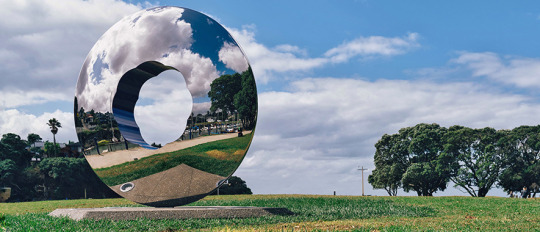
Beacon, a new sculpture by Auckland artist Lang Ea made of shiny stainless steel in the shape of a circle, has arrived at Milford Reserve. It is sure to make people feel welcome as they walk their dogs and get some fresh air during the COVID-19 lockdown.
It is even hoped that it might bring a little bit of happiness in these hard times.
Lang Ea says: “This sculpture symbolises and reflects the significant and courageous achievements of the suffragettes more than a century ago and lights the way for women in the present and future.”
In the middle, there is a violet form that looks like a camellia. The people who fought for women's right to vote chose the colour violet to represent honour and self-respect. In Beacon, Violet speaks to modern ideas of gender equality and women's power.

The Lighthouse / Tū Whenua-a-Kura
"This classic 1950s state house sits at the water’s edge, with neon lights representing the constellations and a polished sculpture of Captain Cook inside."
One of New Zealand's most well-known living artists, Michael Michael Parekwhai, created the 8.5-meter-tall sculpture. It looks like a full-size 1950s state house. Weatherboards, windows, shutters, a brick chimney, and a burnt-red front door are all parts of the house. Inside, though, there is no furniture or other signs of suburban life. Instead, there is an installation of bright lights and a sculpture made of highly polished stainless steel called "The English Channel." It shows Captain Cook sitting on a stool and looking down.
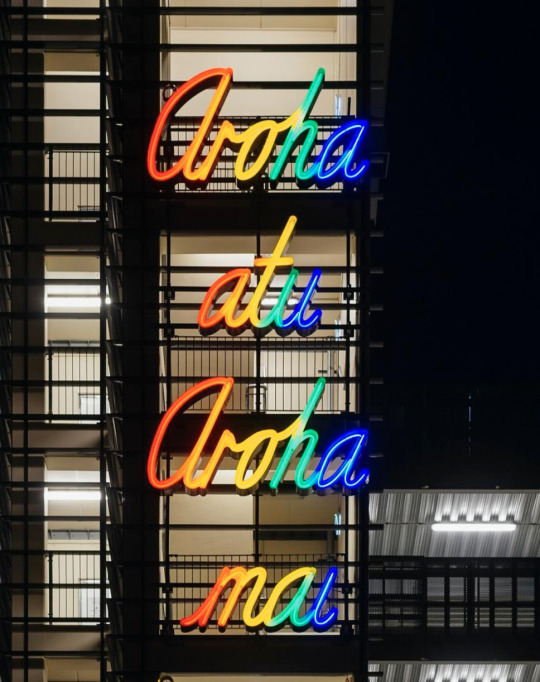
I Love You / Aroha atu, Aroha mai
"A bright and beautiful declaration of love transforms this parking building in Manukau, with words shining in colours of the rainbow."
This neon art makes the scenery of Manukau more interesting and turns one of its most useful buildings into a monument to love. Lonnie Hutchinson, an artist, put two statements, one in English and one in Te Reo Mori, on the outside of this small parking lot in the town centre. Attached to two outside stairwells in the bright colours of the rainbow, the artwork says "I Love You" on one side and "Aroha atu, Aroha mai" on the other, telling people that they are welcome and part of the community. "Love given, love returned" is what the Mori saying "aroha atu, aroha mai" means.
The rainbow-themed art piece has more than one message. The colours of the rainbow stand for freedom, peace, love, and getting along with others. And in traditional Mori society, rainbows (niwaniwa) are signs of things to come.
Hutchinson's work is paired with Me Rongo/Walk in Rainbows by Reuben Paterson, which is also based on rainbows. Together, they are called Night and Day, with Hutchinson's neon piece honouring the night and Paterson's the day.

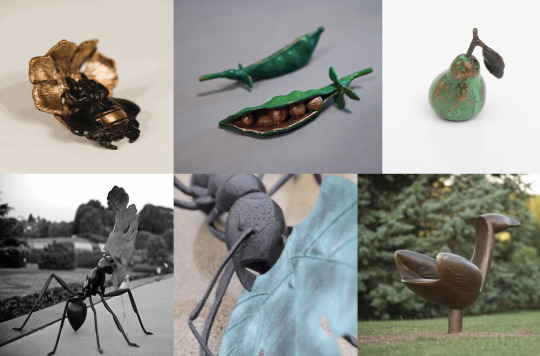
Auckland-based sculptor Samantha Lissette Her art merges organic and manufactured ideas to reveal a natural connection between "planned" natural elements and man's adaptation of them. Her sculptures sometimes use comedy or sarcasm to explore the human condition and add fun and delicacy to a material known for its weight and solidity. Samantha displays in New Zealand and abroad. New Zealand and China hold her work. Lissette has received public and business commissions for her bronze work, from monuments to miniatures.

Object of Devotion by Jim Wheeler
His sculptures contemplate nature and show how humans are part of it. Macrocosm contains microcosm. Finding human nature in nature is his spiritual practise in sculpting. He illustrates the interdependence of all living beings and their environment. Nature is our most perfect system and should inspire our society.
A modest sculpture of a tree's life cycle in your hand conveys a broader truth.
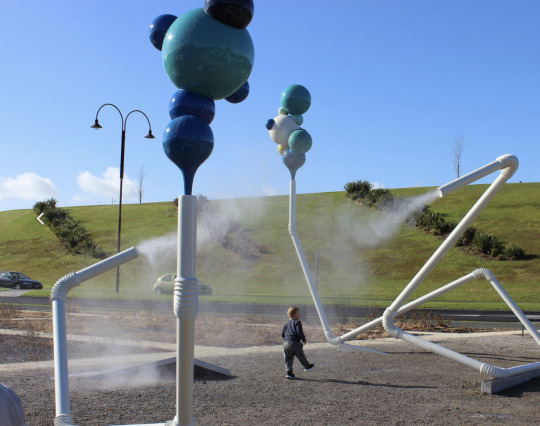
Upon a Pond by artist Seung Yul Oh at Albany Stadium Pool.
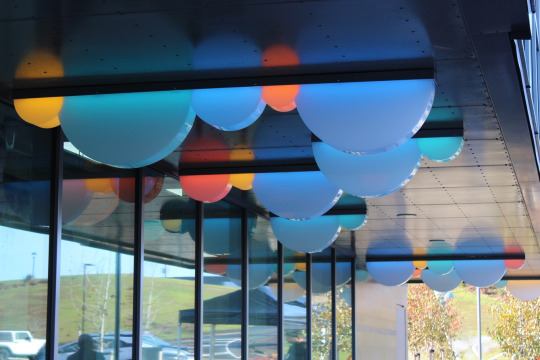
Drop a Loop by artist Seung Yul Oh at Albany Stadium Pool.
Upon a Pond and Drop a Loop combine Oh's humour, brilliant colours, and interaction with pool enjoyment, water, and playfulness. They exhibit swimming pool water in its various phases and make art part of everyday life.
Upon a Pond literally vents! Oh, and designer John O'Sullivan's enormous, colourful sculpture, inspired by blowing bubbles with bendy straws, adds surprise and amusement to the pool facility's outside.
Eye-catching Drop a Loop has 11 cloud-shaped light boxes near the pool entrance. They change colour with natural light.
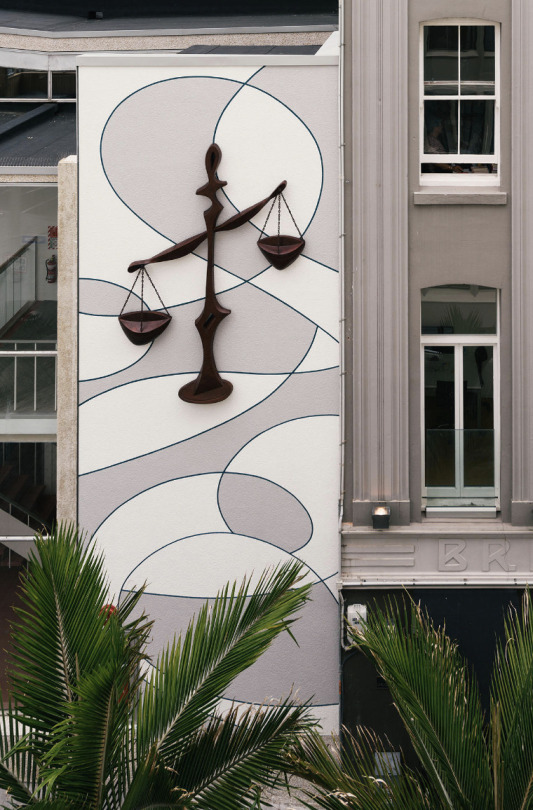
Justice by Lisa Reihana
Lisa Reihana's Justice covers the Ellen Melville Centre's O'Connell Street wall. Ellen Melville, legislator, women's champion, lawyer, and pioneer, inspired a bronze scales of justice sculpture. The bronze shape floats above a 1950s-style abstract wall artwork.
This copper sculpture serves as the focal point of the front; it's a powerful, one-of-a-kind design with a delicate curve, while the lovely abstract wall composition has a 1950s feel, drawing inspiration from James Turkington's painting of the Parnell Baths. To honour Ellen Melville.
0 notes
Text
QUESTIONS WHAT’S THIS TO DO WITH YOU
• How might you engage your curiosity?
I believe engaging curiosity is about becoming interested in what other people are interested in and finding something to learn in every situation/experience. Also finding joy and interest in the things that truly spark creativity or interest. I place a high value on learning as it’s something to share and an opportunity to tell a story and share with others. Also by being aware and having your eyes looking for creative opportunities and looking for the beauty in all things, researching behind it, finding the why and the wwwwwh.
• Who is the creator behind an anonymous poster, artwork, or public design work?

• What are the values that they bring forward into the work?
“The pots represent a place or mountain and the pot is a symbol of a vessel of dirt that you take care of and allow plants to grow in. You become sort of a miniature guardian.” - Shane Cotton
Shane as an artist says “There are multiple readings and interpretations at play and the narratives are numerous for obvious reasons. The underlying currents tend to be ones that are related to land, and to your place in the world, how you fit into the world, between Ranginui and Papatūānuku. What is our place in it?
• What and who are the design communities emerging and being forged at any given moment?
Emerging design communities are people who gather together to share and collaborate with ideas, feedback and to learn from and inspire one another. An example of a design community emerging that I'm in is my Uni classes, design club and also my creative friends.
• What excites you?
My passions are the things I find beautiful and things that make sense to me. A lot of the things that excite me are the things i value such as: ambitions, dreams, arts, colour, adventures, stories, experiences, people, learning, and playing. Things that bring me joy from family and church but also walks and coffee.
• Which creative communities do you want to be a part of?
Creative communities I would like to join are local artists and designers that have passion, ambition and values aligning with mine. A community I have joined is the marketing and design collective club, I have also been a part of the design community going to visit exhibitions at object space.
0 notes
Text
Art in the Public
“ Waharoa “ by Selwyn Muru
"This carved wooden gateway welcomes all people to Auckland’s Aotea Square, featuring mythological figures, symbols and even a haiku expressing Māori and Pacific culture."
This scultpure provides a gateway into Aotea Square, a gathering place and stage for public events.
To achieve the green colour on the forms near the top of the archway he treated pieces of weathered copper with vinegar. Some of the copper came from the top of the old Waitangi wharf piles, and by using it Muru acknowledges Tangaroa (god of the sea and fish) and his birthplace of Northland. The archway shows another four figures, also representing Māori atua (gods); Tamanuiterā (god of the sun), Tangaroa (god of the sea and fish), Tāne-mahuta (god of the forests and birds) and Tāwhiri-mātea (god of the winds, clouds, rain, hail, snow and storms). Representing heavenly bodies on the far left is Whetu me te Mārama (the stars and crescent moon). The body of the archway also features numerous symbols, highlighting Pacific and contemporary themes.
This artwork shows that the creator behind values the Maori culture.

“East Meets West” by Flox

“Maunga” by Shane Cotton
The works were commissioned by the Britomart Arts Foundation in collaboration with Nigel Borell, curator of Māori Art at Auckland Art Gallery Toi o Tāmaki.

0 notes
Text
Public Art
‘Toi Tū Toi Ora: Contemporary Māori Art satellite exhibition at Britomart
Maunga by Shane Cotton

The works were commissioned by the Britomart Arts Foundation in collaboration with Nigel Borell, curator of Māori Art at Auckland Art Gallery Toi o Tāmaki.
Heart Of The City
Murals by Dick Frizzell, Askew One, Sara Hughes and more, sharing the story of Auckland's central city

‘Sun Burst’, Sarah Hughes, 2016.

'Elsie', Askew One, 2015.

'Downtown Tiki', Dick Frizzell, 2015.
Artists share what Auckland’s central city means to them, and their answers have been a beautiful reminder of the diversity of our city.
Kaiārahi at Auckland Art Gallery Toi o Tāmaki
by Reuben Paterson

Commissioned by Auckland Art Gallery Toi o Tāmaki and Edmiston Trust, the sculpture, made of 595 iridescent crystals, navigates a spectacular journey from Papatūānuku into the embrace of Ranginui to cast a galaxy of stars over the pool.
0 notes
Text
① Design in the Public Arena


1 | Maunga
Created by Shane Cotton, the artwork 'Maunga' is displayed on the wall of the Excelsior Building. The artwork was inspired by mountains Cotton has a personal connection with, such as Taranaki and Ruapehu. Cotton describes the artwork as a blend hybrid of the times, blending traditional Maori artwork with something more modern.



2 | New Zealand International Film Festival
This year's NZIFF poster imagery was produced by light artist Angus Muir, and photographer Alistair Guthrie. However the identity of the festival was created by Inhouse Studio back in 2020. Inhouse is an Auckland based design studio with client ranging from Karen Walker to NZ Post. They have a very minimal and contemporary style.


3 | In Your Words
By Heart of the City, 'In your words' is a project started in 2020 where Aucklanders could submit a short piece of writing to say something Auckland's city center. From the submissions, 7 were chosen and displayed on utility boxes along Queens Street.
0 notes
Text
Week One: SDL
For our week one SDL we were tasked to begin collecting visual examples from other creatives. Bringing at least 10 to class for next week. This is including both works from creatives we know and are already influenced by but also works that we see around us in the public and then finding the designers behind the pieces. Below are my 10, these also fit under creative communities and styles that I feel like are beginning to shape me as a designer.
Public: The images below are from all around the city, it is a route I take almost every day to school but I have found myself lacking curiosity and not taking in what is around me, this SDL task gave me a reason to be curious and ended being very influential.
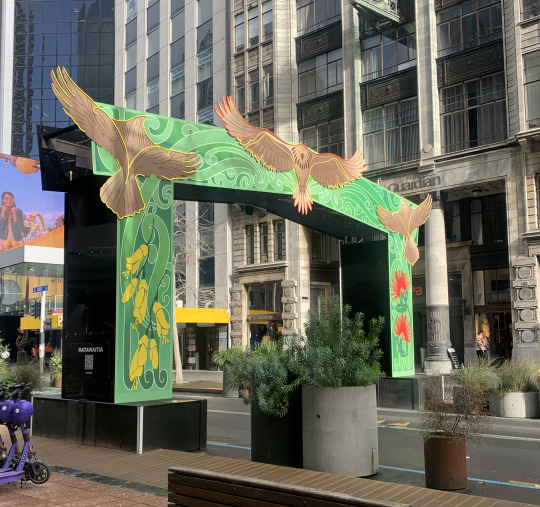
1. Creatives: Graham Tipene, Ataahua Papa & Angus Muir.
This instillation was on Queen Street it was there to celebrate Matariki and honouring the narrative of our kaupapa and the history of Tāmaki Makarau.

2.Creatives: Fuman Designs https://fuman.co.nz
Fuman is a multi-disciplinary design studio, based in Auckland, New Zealand. We specialise in branding, packaging and digital design.


3.Creatives: Shane Cotton
Cotton is a New Zealand painter whose work explores biculturalism, colonialism, cultural identity, Māori spirituality, and life and death
https://britomart.org/shane-cotton/

4. Creatives: Maui studio’s https://www.mauistudios.co.nz
Spark has collaborated with kaupapa Māori production studio, Māui Studios, to create digital art that brings to life the stories of the nine Matariki stars.
5. Paul Rand

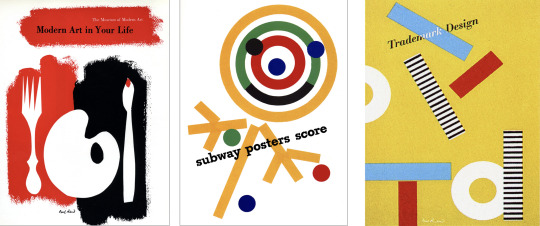
Paul Rand was a leading figure in twentieth-century graphic design. He helped revolutionise commercial art in America during the 1930s, advocating the functional yet beautiful designs envisioned by European modernists. I was introduced to Paul Rands work when I was in college and immediately loved the style. He has produced a wide range of work, from posters, publication, logos and so on. His style is fun and really emphasises the beauty of simplicity.
6. White Rabbit


White Rabbit is a full-service graphic design agency that provides a dynamic range of creative services. Hop to us for World-class branding, digital, print and illustration design. Discover our capabilities below. I love to look at different design studios such as white rabbit as there works are so different and diverse in the topics and in the style, it shows that as a designer you are able to do a wide range of things with the skills we are learning. https://whiterabbit.nz/capabilities/
7. curios studio
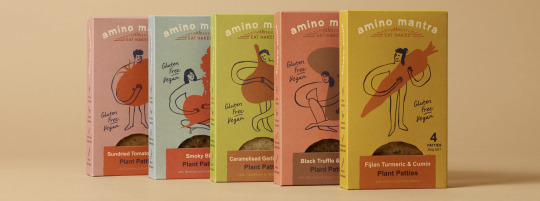
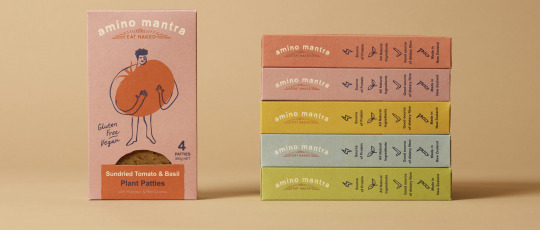
Curious is an independent Auckland based design and brand strategy agency. Focusing on brand design. https://www.curious.co.nz/our-services-1
8. Pete McDonald
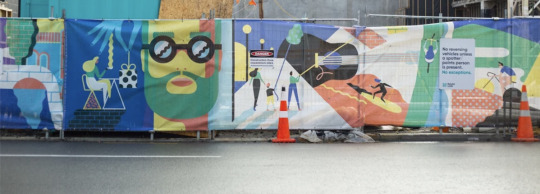

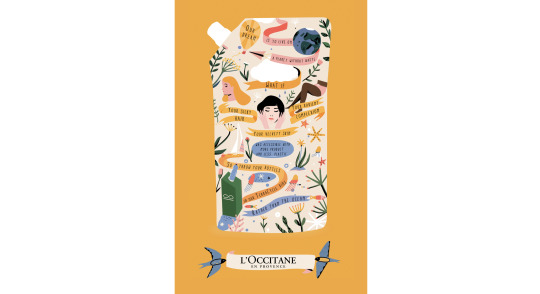
Pete Mcdonald is a Christchurch-based freelance designer, illustrator and animator who has created a massive and massively varied body of work. I have recently come across his work. I love his illustrative style as it adds a lot of personality to not only brands but around the public.
https://www.petejmcdonald.com
9. Studio Akin

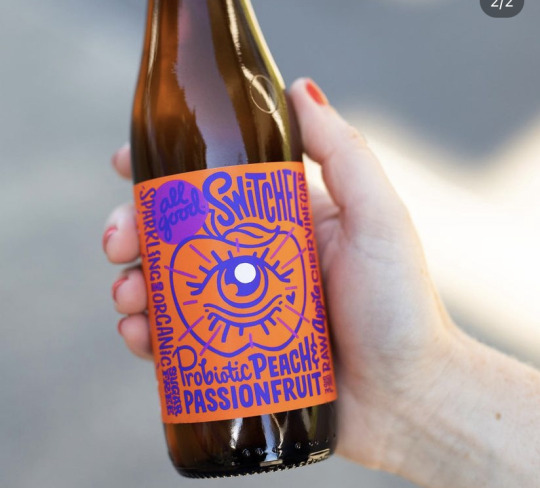

Atkin is another design studio that I have crossed and found quite influential. similar to the other studios there is a range of work and styles throughout their cite. I specifically love thievery graphic and illustrative styles that add a bit of fun to something as simple as the oat milk.
https://www.instagram.com/wearestudioakin/?hl=en
10. Moshimoshi classroom (Aya Yam)
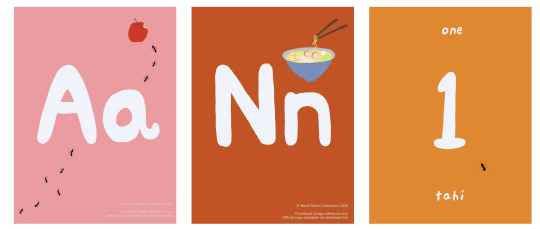


Moshimoshi classroom run solely by one person. I was introduced to this work as she is a friend of my Mums. The work produced is in a distinct graphic and playful manner as it is made to be a resource for teachers around Aotearoa. To teach diversity and basic knowledge on Māori culture and our countries culture. I have always loved this specific style, the playfulness making it accessible for younger audiences but still informative for older generations.
0 notes
Link
Eight years after the Roof skating section of Colin Read’s Tengu: God of Mischief had us creeping around rooftops in NYC, Shane Auckland and the Sk8rats crew took a stab at the rooftops of Los Angeles, and came proper! There are some pretty amazing roof spots in LA actually, and they founds them. Sure, the concept is gimmicky (not a bad thing), but the skating holds up to any clip of pure skateboarding with tricks that don’t seem to be toned down to work on rooftops. These guys are incredible. Shoutout to Transworld’s consistent love for rooftop skating.
#roof rats#roof skating#skateboarding#rooftops#transworld#brett sube#brian baca#kyle seidler#niels bennett#ryan alvero#sean istaste#sebo walker#shane auckland#shawn hale#travis harrison#sk8rats
0 notes